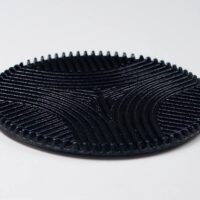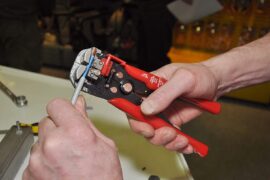Drone cameras led professionals and enthusiasts to a whole new world of photography and videography. By allowing one to capture scenes mid-air, they gave our eyes a new perspective of things. Now, besides filmmaking and casual photography, drone cameras are getting more handy in terms of journalism, geographic mapping, search and rescue operations, and more.
Camera manufacturers saw a great deal of potential in this market. And so, over the years, big companies managed to produce the best designs possible for drone cameras. First of them is the EVO II from Autel. Besides the reliable drone body that can withstand gusts of winds, it boasts 8K video which is groundbreaking for such a category. It is even fashioned with options and modes that will allow it to follow subjects while preventing collisions from trees and walls.
DJI and Powervision are other brands that are worth considering due to the number of models they introduced to the public. With each one sporting striking features such as optical zoom and a 1-inch sensor, picking the best one is almost a huge work. After all, sensor size and resolution aren’t the only important things to check for in a drone camera. The anti-collision system, controller, battery, and other features are just as important as the first ones mentioned.
Enlisting the aid of our Photography Editors, Evangeline Summers, we compared and tested the best drone cameras on the market. To give you more ideas and better insights about them, we will highlight the strengths and weaknesses of each model on the list based on our unbiased findings. Here they are...
Best Drone Cameras Comparison & Rating
Drone Cameras | Features |
1. Autel EVO II | |
3. DJI Air 2S | |
1. Autel EVO II





While Autel EVO II doesn’t have the beautiful tricks and features of other models, it comes with all the basics you need. As a matter of fact, it offers more than what you would expect from it. It comes with a whopping 8K video resolution which can steal the limelight from more famous brands. Moreover, with matching Sony IMX586 stacked CMOS 48-megapixel sensor and ƒ/1.8 lens for 25.6 mm effective focal length, you get the best of both worlds with EVO II in terms of stills and videos. It can give you the best kind of details even with the images zoomed in.
“You can maximize the use of its high-res specs and even enjoy it further with the use of its features that can aid you in your creative shot approaches,” said Summers. “For instance, it comes with the Viewpoint in which you can specify the exact speed of the drone as it moves towards a specific direction. The best thing about it is that you can perform this command with just a tap on the control screen. There are still a lot of controls you can choose from, making this drone the top choice among professionals who need a versatile drone. As a matter of fact, you can use it for basic operations without even connecting your phone to the controller!”
On the other hand, according to Summers, the body of the Autel EVO II is undeniably bulky at 397 mm across. Given all the things it is packed with, however, it is a small detail to forgive. It has legs on all of its arms, allowing it to land on the most critical and uneven surfaces with ease. It also comes with a 7,100 mAh battery which further explains the size and shape. It gives you longer battery life which can last up to 40 minutes, though this still depends on the operations being executed by the camera.
The body also houses 12 sensors for a legit full-body collision sensor system. The placement of the sensor cameras is very noticeable but they won’t disappoint even a bit in performance. The sensors detect and prevent collisions by making necessary automatic adjustments for you to avoid any solid objects at any moment as it flies. Neat!
2. DJI Mavic 2 Zoom





What probably sets DJI Mavic 2 Zoom apart from its rivals is its 2X optical zoom lens which even its pricier sibling, the Mavic 2 Pro, doesn’t offer. However, as said, you can’t have it all. So, we honestly think that it is a practical move by the brand to push the market to choose between the two magnum opuses possessing different irresistible features. So, is the optical zoom of Mavic 2 Zoom worthy of your attention? Definitely.
“With just a few models offering optical zoom capability in a such kind of camera, it is amazing. Mavic 2 Zoom’s lens with an effective focal length ranging from 24 to 48 mm allows you to play with your shots. For instance, the drone comes with a Dolly Zoom quick shot feature which can help you to achieve a short yet impressive continuous perspective distortion. It executes this classic technique by playing on the optical zoom of the camera together with some movements by the drone itself. This is a huge attraction for videographers who need creative features that will aid them in their projects,” said Summers.
However, according to Summers, while it can capture 4K videos, its grace falls down in terms of its frame rate at a maximum of 30fps. Thankfully, you can always opt for its 2.7K at 120fps or 1080p at 120fps. The quality of the videos are pretty great and can still come out crisp with sufficient details
Also, it only offers a 1/2.3” 12 MP CMOS sensor which can be a bit underwhelming. Nonetheless, it can still meet all the right standards and can still provide you the best set of details. To further compensate, it sports the Super Resolution which is basically a panorama that would do the job for you by capturing and stitching 9 frames. With this, you get a whopping photo resolution of 48 megapixels.
In terms of build and movement in the air, Mavic 2 Zoom won’t disappoint. Despite being one of the most compact designs on the market, unfolding it will give you a sleek and balanced 354 mm body span that can move forward up to 45 mph. And to assist users, its body is surrounded by lenses to achieve an effective obstacle sensing system around the aircraft. It can sense obstructions as far as 20 meters with the aid of its AI.
3. DJI Air 2S





DJI Air 2S is probably one of the most awaited drones by enthusiasts. It is almost the same size as Mavic Air 2 where it is commonly compared with. Nonetheless, besides the body, you get excellent upgrades in Air 2S.
DJI Air 2S is designed with a 20 MP 1”-type CMOS sensor with 22 mm equivalent fixed-aperture F2.8 lens. And while the size of its sensor is common among the cameras in this category, DJI Air 2S shocked the market after announcing that it can be purchased in such a model that is under $1000.
“What’s even amazing about it is that its shutter can cater to 8-second exposures which basically means that you can produce beautiful nighttime and motion blur shots,” Summers said. “Also, you also have the option for various video resolutions which are 5.4K/30fps, 4K/60fps, and 1080p/120fps. The zoom ranges in the said resolutions are very incredible that you can zoom 6X to 8X under 1080p, depending on the frame rate. Most of all, videographers would be impressed at its ability to deliver 5.4K videos utilizing the full width of its sensor without even pixel binning.”
On the other side of the coin, compared to other models of DJI, the drone motor of the Air 2S works relatively quieter. Also, DJI armed it with an improved APAS 4.0. This gives you the drone obstacle avoidance sensors around its body to prevent collision while moving forward, backward, downward, and upward. This feature will maneuver the drone for your convenience to avoid solid blockages in the way. This, however, lacks the left and right protection which you can find on the design of Mavic 2 Pro.
Further, besides the typical features (QuickShots, including Dronie, Circle, Helix, Rocket Asteroid, and Boomerang) of Air 2S, it is graced with newer ActiveTrack 4.0 and Point of Interest 3.0. The intelligent features are very reliable to follow subjects and can perform efficiently while avoiding collisions using the aid of its APAS. In the process, it will stop, hover, and change its ordinary track every time it detects blockages.
4. DJI Mavic 2 Pro




The DJI Mavic 2 Pro caught the attention of the public due to its 20-megapixel Hasselblad camera and sensor that comes at 1-inch size. Besides that fact, devoted photographers fell in love with Mavic 2 Pro due to its adjustable aperture (f/2.8 to f/11) and 128,000 ISO. This will allow users to play with the depth of field and exposure of shots and even execute aperture priority, shutter priority, or manual mode. With the right settings, the shots will result in detailed images that are rich and crisp while remaining remain natural-looking.
There are also loads of modes both for stills and videos to aid you in capturing projects with ease. For stills, you have HDR, AEB, HyperLight, Interval, Single Shot, Burst Mode, and Panorama. On the other hand, the video mode offers Active Track, Cinematic, Point of Interest, Timelapse, Quickshot, Waypoint, and TapFly.
On the other hand, despite the 1-inch size of the sensor, it is still considered one of the most compact drone cameras on the market. The controller of the drone is also of good size and everyone would love its 11 shortcut buttons. This will save you time fiddling with the app just to find them. It even comes with the three main flying modes which are the Tripod Mode, Positioning Mode, and Sports Mode.
Also, according to Summers, it can still compete with others despite having the oldest version of DJI’s Advanced Pilot Assistance System.
“Thanks to the obstacle avoidance sensors around the drone, it has protection while moving forward, backward, downward, upward, and even left and right. It has a maximum speed of 45 mph but the sensors can initiate a break to stop possible collision once threats are sensed. That being said, it is one of the best camera drones for beginners as it offers the best safety; thanks to the drones covering all the angles of its body,” she said.
5. Powervision PowerEgg X





The Powervision made sure that users of PowerEgg X would get the best out of their purchase by designing it to be as versatile as possible. Besides its primary function as a drone camera, the PowerEgg X now comes with a new capability to be a camcorder camera that is tripod-mounted or even handheld. Given its gimbal that promotes the stability of shots, it is no wonder how PowerEgg X can thrive in such different situations.
As for its ability to enter to tolerate water, PowerEgg X comes with great features you can rely on. It is equipped with landing gear and housing that protect its vital sections in case of a possible collision. Most of all, Powervision made sure that it can be reliable enough to battle the rain and easily land on water with its Wizard bundle. This makes it one of its greatest strengths against its competitors which deem the rain as a serious threat.
Overall, Summers explained, the constriction and engineering of the drone assure the main unit itself would be completely untouchable by water.
“The weatherproofing is 5-star and can’t be questioned as everything that needs protection is sealed. Also, the distribution of weight is so perfect that its movement in the air shows great control. Excellent and stable. It can handle winds up to 65 kph which, given its size, is fair enough. Also, it can go as far as 6 km through its 3,800 mAh batteries that can last for at least 30 minutes. Apparently, the battery life can last longer, if the unit is used as a handheld or a tripod-mounted device.”
The camera capabilities are not that impressive, however. Yet, we find it capable enough to handle most of your photography needs. Besides the AI collision prevention and the subject tracking ability, it can capture 4K videos at 60fps or 720p at 240fps! This can make a huge impression on videographers, given that most of its competitors (and even some regular camera models) come with lower frame rates and resolutions. However, we just noticed that the noise of the fan was extremely noticeable during our test so this could be a major caveat to ponder about.
On the other hand, the 12 MP camera delivers fairly great stills, despite the small sensor at 1/2.8” and an aperture of f/1.8. Another good thing about it is that the shots don’t suffer from any fisheye effect. However, while it has impressive protection from the rain, we realized that the shell itself can affect the quality of the stills. Besides the soft edges, it causes unwanted reflections of light and flares which can mess up with the photos. This, fortunately, only depends on the angle of the camera.
Best Drone Cameras - Buyer's Guide
Check for the controls of the drone camera. They should be intuitive and easy to execute. However, expect that there would always be a learning curve in any kind of drone controller and application. Also, it will be better if the unit can also offer shortcut buttons included on the controller itself just like what you can find in the DJI Mavic 2 Pro and others.
While it is alluring to have a drone camera with a whopping number of megapixels, the size of the lens also matters. Keep in mind that the quality of the lens can affect the quality of each pixel. With this, the two should be considered both.
The efficiency of the anti-collision system of a drone camera can be determined by the number of sensors spread around its body. Ideally, it should cover the front, back, bottom, top, and even the right and left sides of the drone. In this way, you can assure that the unit itself has full protection on all sides.
Each drone model offers different kinds of unique features that will totally charm you. However, it is upon you to determine if these features are worth your consideration or if it is just some sort of marketing gimmick. For instance, there are cameras that come with voice controls but it is really not that necessary since executing the controls is almost instant on the controller.
Best Drone Cameras - FAQs
This depends on the quality of the camera. There are those that can only last from 10 to 20 minutes. However, most professional drone cameras usually last 30 minutes or more.
The main reason for this is the system being used to operate the drone itself. Since the fans need to rotate as fast as possible to keep the drone camera flying, the battery drains fast. Also, consider the other actions the camera needs to perform.
Flying a drone is legal, according to the U.S. Federal Aviation Authority. However, there are some states in the US that have their own specific regulations about the use of drones. With this, it is better to do a little research before flying it in any airspace.











